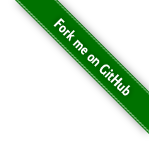#012 Exception Handling
Exercising C++ exception handling.
Notes
The essentials of exception handling in c++:
- when compiling c++, exception handling is usually turned on by default. But this can be compiler-specific and require switches to enable
- mulitple
catchblocks allow catching different types of errors - noexcept specifier indicates the method cannot throw an exception. Bad practice generally.
- noexcept is an improved version of
throw(), which is deprecated in C++11
- noexcept is an improved version of
- polymorphism applies: must catch exception subclasses before ancestors
Demo
exception_handling.cpp runs through a variety of exception classes that are caught:
- simple ints
- simple char messages
- string messages
- custom exception classes
- polymorphic standard exceptions
..and ends on an uncaught exception.
NB: this is updated for C++17 syntax - specifically the use of noexcept instead of throw().
$ g++ -std=c++17 -o exception_handling.exe exception_handling.cpp && ./exception_handling.exe
Testing a range of standard and custom exceptions..
Error code: 33
Basic error message: Oh deary me
String error message caught by reference: Out of bacon
bad_alloc error message caught by reference: std::bad_alloc
Generic exception error message caught by reference: std::exception
CustomException message caught by reference: Something bad happened
Now testing an exception in a constructor..
exception_handling.exe(28207,0x7fffae28f380) malloc: *** mach_vm_map(size=1000000000000000) failed (error code=3)
*** error: can't allocate region
*** set a breakpoint in malloc_error_break to debug
bad_alloc message: std::bad_alloc
And we're still running!
But the next has no handler:
libc++abi.dylib: terminating with uncaught exception of type int
Abort trap: 6
